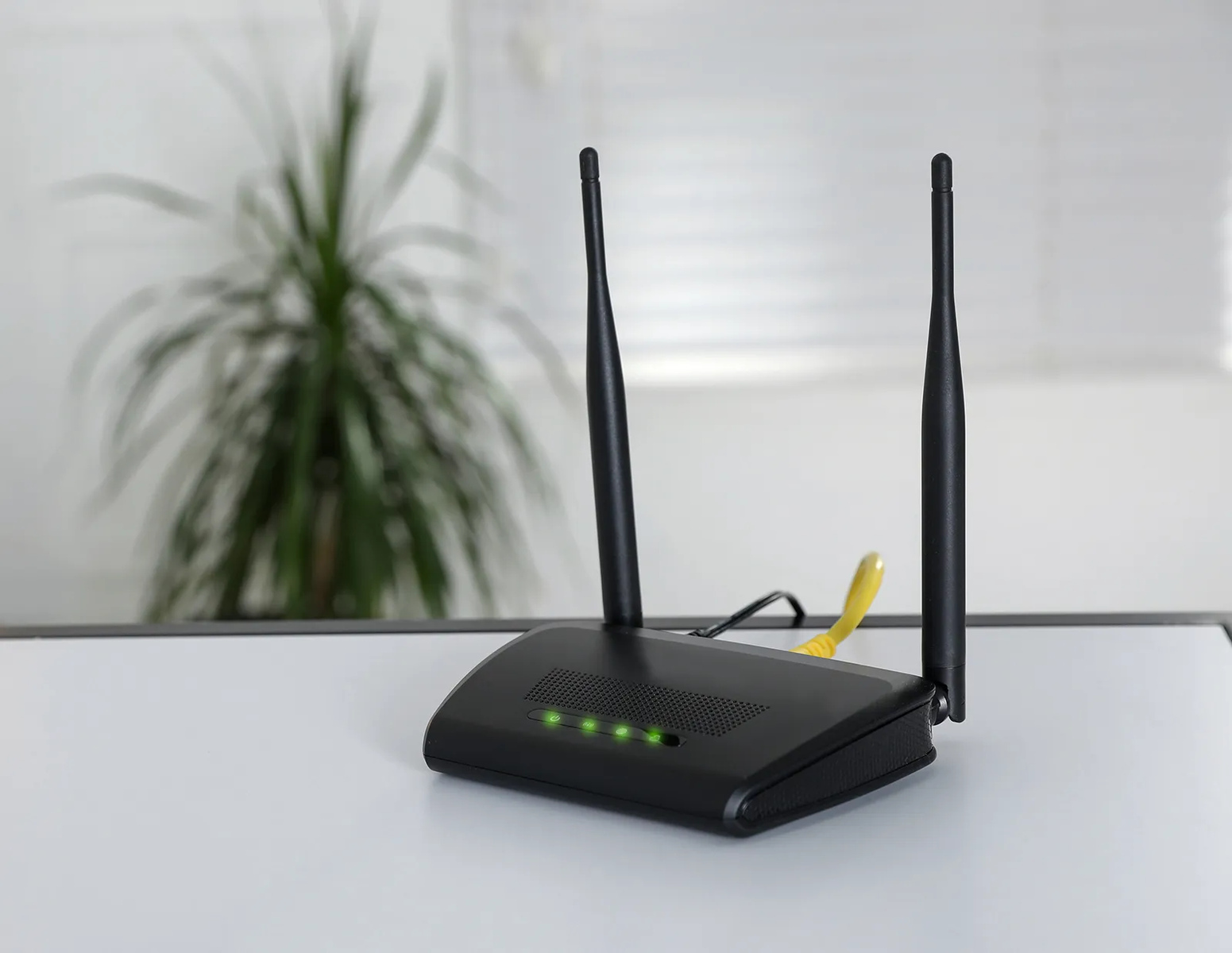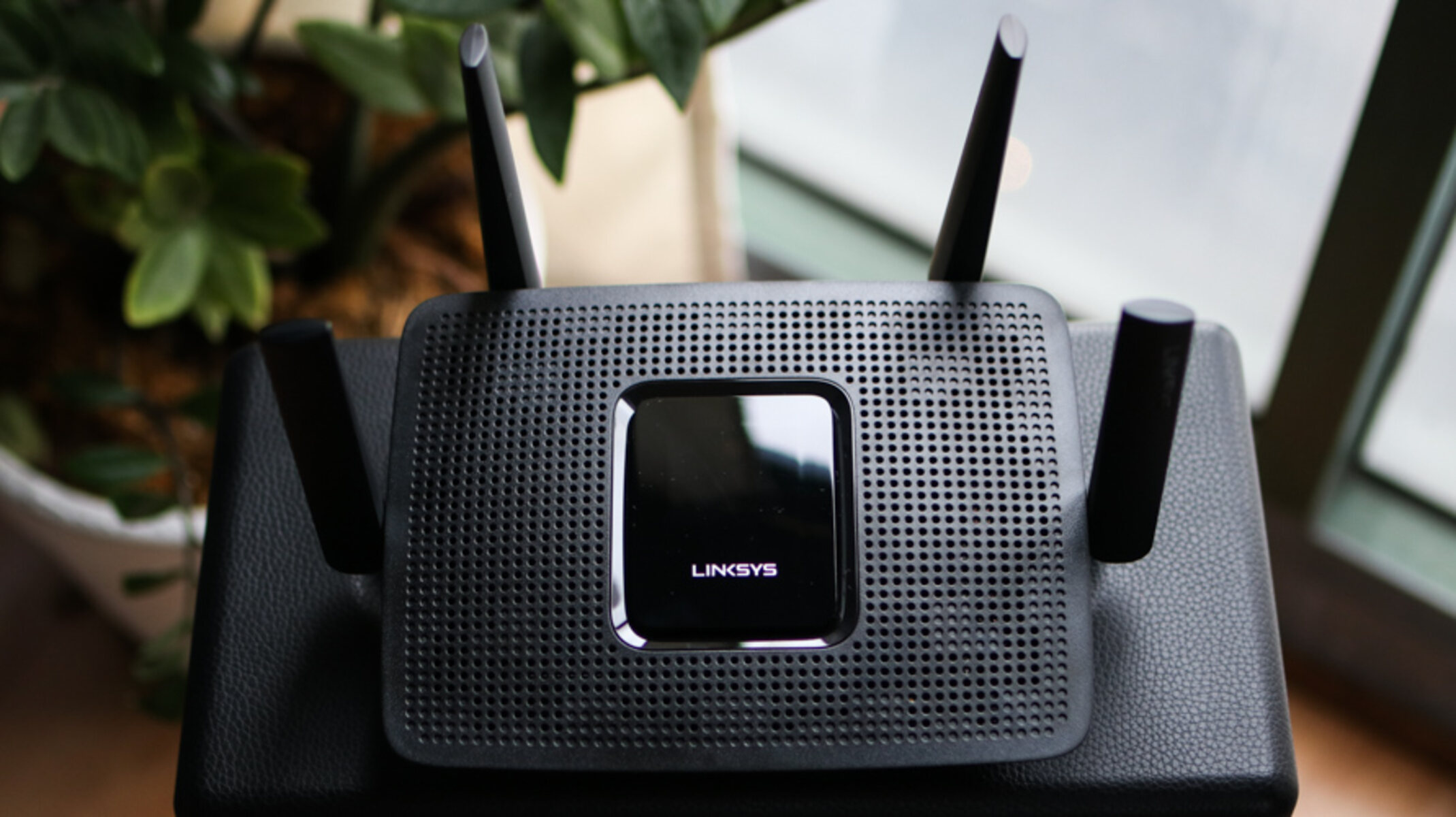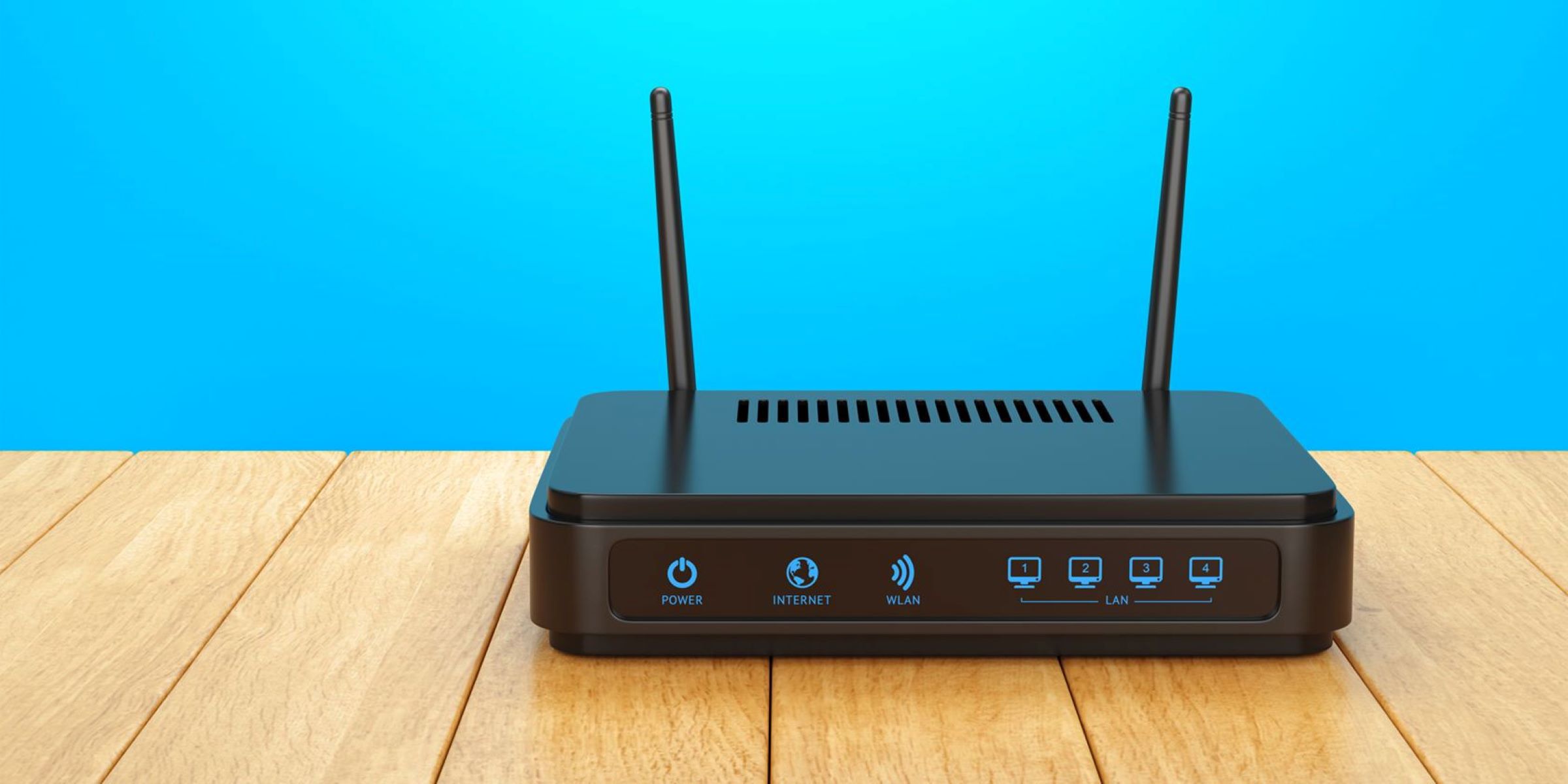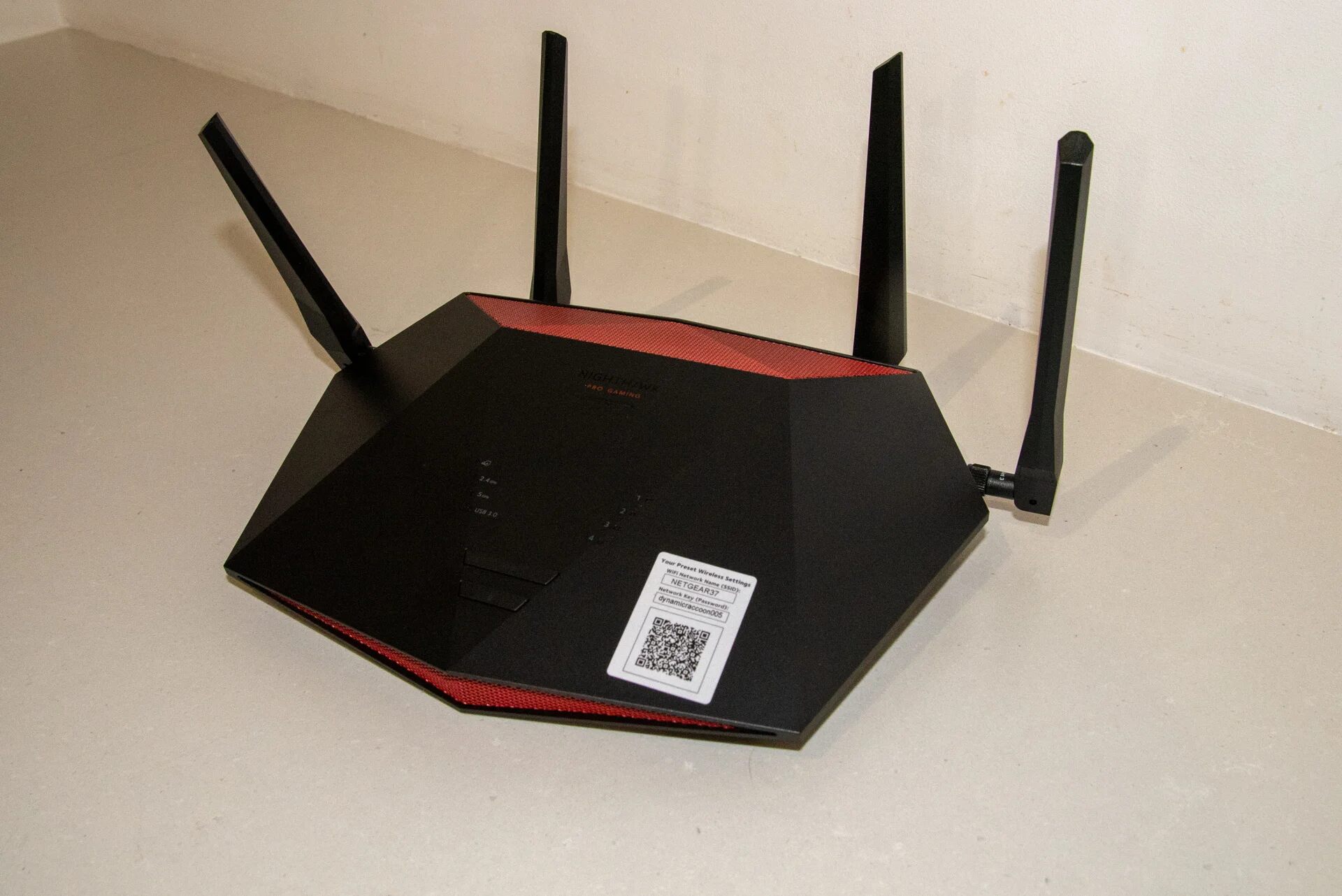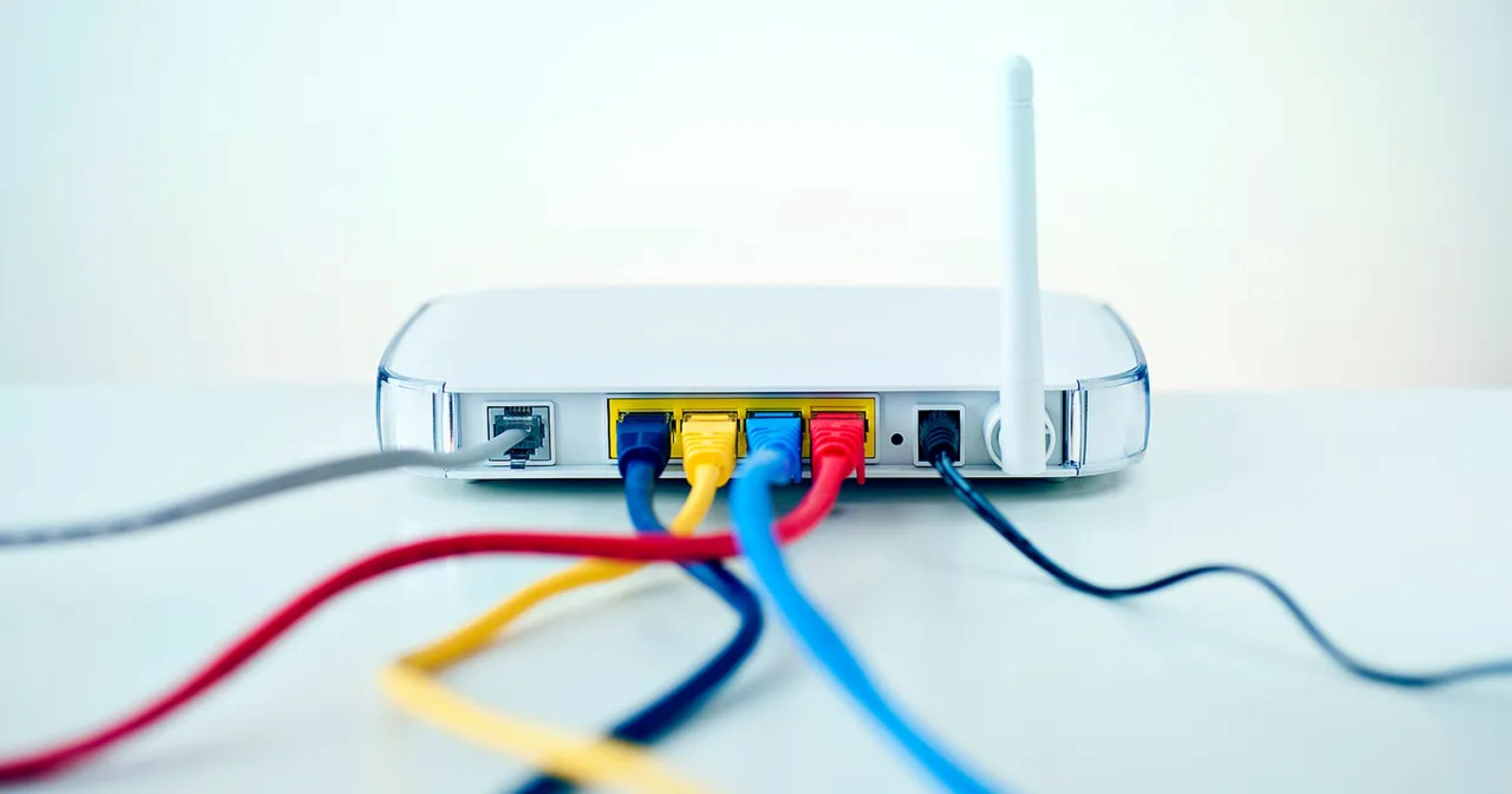Introduction
Wireless routers have become an essential part of our daily lives, allowing us to connect multiple devices to the internet without the hassle of wires. While the convenience is undeniable, it’s crucial to ensure that your home network is secure from potential intruders.
A compromised home network can lead to identity theft, unauthorized access to sensitive information, and even the hijacking of internet bandwidth. Taking the necessary measures to protect your wireless router is paramount in safeguarding your online privacy and ensuring the smooth functioning of your network.
In this article, we will explore some basic wireless router configuration steps that you can implement to prevent outsiders from using your home network. By following these measures, you can significantly reduce the risk of unauthorized access and keep your internet connection secure.
It is important to note that while these methods provide a good baseline for protection, no security measure is foolproof. It’s crucial to stay vigilant and regularly review and update your router’s configuration to adapt to evolving threats.
Now, let’s dive into the various security measures you can take to protect your wireless network and keep your information safe.
Basic Wireless Router Security Measures
Before we delve into more advanced configuration settings, it’s essential to start with some basic security measures that every wireless router owner should implement. These measures will establish a strong foundation for protecting your home network.
1. Change the Default Admin Password: One of the first things you should do after setting up your router is to change the default administrative password. Leaving it unchanged makes it easier for attackers to gain access to your router’s settings and potentially take control of your network.
2. Disable Remote Administration: Remote administration allows you to access your router’s settings from anywhere in the world. However, enabling this feature poses a security risk, as it opens a doorway for malicious individuals to exploit. Make sure to disable remote administration unless you specifically require it.
3. Enable Network Encryption: Encrypting your wireless network is essential to prevent unauthorized users from eavesdropping on your internet traffic. Use the latest encryption protocols, such as WPA2 or WPA3, to ensure the highest level of security.
4. Use a Strong Wi-Fi Password: Set a unique and strong password for your Wi-Fi network. Avoid using common words, phrases, or easily guessable combinations. A strong password should be at least 12 characters long, include a mix of uppercase and lowercase letters, numbers, and special characters.
5. Disable SSID Broadcast: Your router’s SSID (Service Set Identifier) is the name of your wireless network that appears when devices search for available connections. By disabling SSID broadcast, you make it less visible to outsiders, adding an extra layer of protection. Users will need to manually enter the network name to connect.
Implementing these basic wireless router security measures will significantly reduce the risk of unauthorized access to your home network. However, it’s important to remember that these measures are just the beginning, and there are additional steps you can take to enhance your network’s security.
Change the Default Admin Password
One of the most critical steps in securing your wireless router is changing the default administrative password. When you purchase a new router, it typically comes with a default username and password set by the manufacturer. Attackers are well aware of these default credentials, making your network an easy target if you don’t take action.
Changing the default admin password is a simple process that can go a long way in protecting your router and network from unauthorized access. Here’s how you can do it:
- Access your router’s administrative panel by typing the router’s IP address into a web browser.
- Enter the default username and password provided by the manufacturer. You can find this information in the router’s manual or on the manufacturer’s website.
- Locate the administrator settings or account management section in the router’s control panel.
- Select the option to change the admin password.
- Create a strong and unique password for the administrator account. Make sure to use a combination of uppercase and lowercase letters, numbers, and special characters.
- Save the changes and log out of the router’s administrative panel.
By changing the default admin password, you effectively block access to anyone who knows the default credentials. This step alone can thwart many attempts to gain unauthorized control over your router and network.
It’s important to emphasize that you should never reuse passwords or use easily guessable combinations. Using a strong, unique password for your router’s admin account adds an extra layer of protection to your network and minimizes the risk of unauthorized access.
Remember to store your new admin password in a secure place and avoid sharing it with anyone unless necessary. Regularly updating your admin password is also recommended, especially if you suspect a breach or if it has been a considerable amount of time since you last changed it.
Changing the default admin password is a fundamental security measure that should not be overlooked. Taking the time to make this simple adjustment will significantly enhance your network’s protection and minimize the risk of unauthorized access.
Disable Remote Administration
Remote administration allows you to access your router’s settings from anywhere in the world, providing convenience and flexibility. However, enabling this feature also opens up a potential security vulnerability that malicious actors can exploit. To enhance the security of your wireless router, it’s recommended to disable remote administration unless you have a specific need for it.
Disabling remote administration ensures that only devices connected to your local network can manage the router’s settings, reducing the risk of unauthorized access from external sources. Here’s how you can disable remote administration:
- Access your router’s administrative panel by typing the router’s IP address into a web browser and logging in with your admin credentials.
- Navigate to the remote administration settings section in the router’s control panel.
- Disable the remote administration feature, usually by unchecking a box or toggling a switch.
- Save the changes and log out of the router’s administrative panel.
After disabling remote administration, you will only be able to access your router’s settings when connected to your local network. This ensures that no external entities can tamper with your router’s configuration.
Keep in mind that there may be instances where you need to access your router remotely, such as troubleshooting or making changes while away from home. If this is the case, it is important to weigh the convenience against the potential security risks. If you choose to enable remote administration, make sure to take extra precautions, such as setting a strong password and using secure connection protocols.
By disabling remote administration, you close a potential entry point for hackers. This simple step significantly reduces the risk of unauthorized access to your router and strengthens your overall network security.
Regularly reviewing your router’s settings and ensuring that remote administration remains disabled is a crucial aspect of maintaining a secure home network. By being proactive in securing your router, you can enjoy peace of mind knowing that your network is protected from external threats.
Enable Network Encryption
Network encryption is a crucial security measure that protects your wireless network from unauthorized access and ensures the confidentiality of your data. Without encryption, anyone within range of your Wi-Fi signal could potentially intercept and view your internet traffic, including sensitive information.
To enhance the security of your wireless router, it is essential to enable strong network encryption protocols. The most commonly used encryption protocols are WPA2 (Wi-Fi Protected Access II) and its successor, WPA3. Here’s how you can enable network encryption:
- Access your router’s administrative panel by typing the router’s IP address into a web browser and logging in with your admin credentials.
- Navigate to the wireless settings or security settings section in the router’s control panel.
- Locate the encryption settings and select the desired encryption protocol (WPA2 or WPA3).
- Set a strong passphrase for the encryption key. Use a combination of uppercase and lowercase letters, numbers, and special characters. Avoid using common words or easily guessable phrases.
- Save the changes and log out of the router’s administrative panel.
By enabling network encryption, you establish a secure connection between your wireless devices and your router. This encryption ensures that only authorized devices with the correct encryption key can access your network and communicate with it securely.
It’s important to note that older encryption protocols like WEP (Wired Equivalent Privacy) are no longer considered secure and should not be used. WEP can be easily cracked, rendering your network vulnerable to unauthorized access. Therefore, it’s recommended to choose either WPA2 or WPA3, as they offer stronger encryption and better security.
Remember to update your encryption passphrase regularly and avoid reusing passwords. Regularly changing the encryption key adds an extra layer of protection to your network by preventing potential attackers from deciphering your network traffic. Additionally, avoid sharing your encryption key with unauthorized individuals and keep it confidential to maintain the integrity of your wireless network security.
Enabling network encryption is a crucial step in securing your wireless router and protecting your network from unauthorized access. By implementing these encryption measures, you can rest assured that your data is safe and your wireless network remains secure.
Use a Strong Wi-Fi Password
Setting a strong Wi-Fi password is vital for protecting your wireless network from unauthorized access. A weak or easily guessable password can leave your network vulnerable to intruders who may exploit your internet connection, compromise your privacy, or even gain access to sensitive information.
Here are some important tips for creating and using a strong Wi-Fi password:
- Length and Complexity: A strong Wi-Fi password should be at least 12 characters long. Use a combination of uppercase and lowercase letters, numbers, and special characters to make it more complex. Avoid using common words, personal information, or predictable patterns.
- Avoid Dictionary Words: Hackers use powerful programs that can quickly crack passwords by attempting a wide range of dictionary words. Avoid using common words found in dictionaries as part of your password.
- Unique Password: Do not reuse passwords that you have used for other accounts or services. Each password should be unique and specific to your Wi-Fi network.
- Regularly Change Your Password: It is a good security practice to change your Wi-Fi password regularly. By doing so, you minimize the chances of an attacker guessing or cracking your password.
- Do Not Share Your Password: Avoid sharing your Wi-Fi password with people you do not trust. Only provide the password to individuals who need access to your network, and consider creating a separate guest network if you frequently have visitors.
- Use a Password Manager: If you have trouble remembering complex passwords, consider using a reputable password manager. These tools can securely store and generate strong passwords on your behalf.
Remember that a strong Wi-Fi password adds a layer of protection to your network, making it difficult for unauthorized users to gain access. A weak password, on the other hand, can quickly be exploited by determined individuals.
When configuring your Wi-Fi password, ensure that your router settings require all devices to enter the password when connecting. This prevents unauthorized devices from joining your network, even if they are within range of your router’s signal.
By taking the time to create a strong Wi-Fi password and regularly updating it, you significantly improve the security of your wireless network. This simple yet effective measure helps to safeguard your data, maintain your privacy, and prevent unauthorized use of your internet connection.
Disable SSID Broadcast
SSID (Service Set Identifier) is the name of your wireless network that appears when nearby devices search for available Wi-Fi connections. By default, routers are configured to broadcast the SSID, making it easier for devices to detect and connect to the network. However, disabling SSID broadcast can add an additional layer of security to your wireless network.
When you disable SSID broadcast, your network’s name will no longer show up in the list of available networks on nearby devices. This means that users will need to manually enter the network name (SSID) to connect to your Wi-Fi network. Here’s how you can disable SSID broadcast:
- Access your router’s administrative panel by typing the router’s IP address into a web browser and logging in with your admin credentials.
- Locate the wireless settings or SSID settings section in the router’s control panel.
- Look for an option to disable SSID broadcast.
- Uncheck the box or toggle the switch to disable SSID broadcast.
- Save the changes and log out of the router’s administrative panel.
By disabling SSID broadcast, you make your wireless network less visible to outsiders and potential attackers. This makes it more challenging for unauthorized users to identify and target your network for unauthorized access.
However, it’s important to note that disabling SSID broadcast is not a foolproof security measure. Experienced hackers can still discover the hidden network through various means. Therefore, it’s crucial to combine this step with other security measures, such as enabling network encryption and using a strong Wi-Fi password.
When connecting new devices to your network after disabling SSID broadcast, you will need to manually enter the network name (SSID) during the connection setup process. This ensures that only individuals who are aware of the network name can connect to your network.
While disabling SSID broadcast may add an extra layer of security, it can also make it slightly more inconvenient for authorized users to connect to the Wi-Fi network. Therefore, weigh the benefits and convenience before deciding whether to disable SSID broadcast.
By disabling SSID broadcast, you make it more challenging for potential attackers to identify and target your wireless network. This simple step, in conjunction with other security measures, helps to strengthen the security of your Wi-Fi network and enhance your overall protection against unauthorized access.
Enable MAC Address Filtering
MAC (Media Access Control) address filtering is an additional security measure that you can implement on your wireless router to enhance the security of your network. Enabling MAC address filtering allows you to control which devices can connect to your Wi-Fi by specifying their MAC addresses.
Every network-enabled device has a unique MAC address assigned to its network interface. By enabling MAC address filtering, you create a whitelist of approved devices whose MAC addresses are allowed to connect to your network. Here’s how you can enable MAC address filtering:
- Access your router’s administrative panel by typing the router’s IP address into a web browser and logging in with your admin credentials.
- Navigate to the device management or MAC address filtering settings section in the router’s control panel.
- Enable MAC address filtering by checking the appropriate box or toggling the switch.
- Enter the MAC addresses of the devices you want to allow access to your network. You can usually find the MAC address on the label of the device or in the device’s network settings.
- Save the changes and log out of the router’s administrative panel.
By enabling MAC address filtering, you add an extra layer of security to your wireless network. Only the devices whose MAC addresses are listed in the filter will be able to connect to your network, even if they have the correct network name (SSID) and password. Unauthorized devices with unknown or unlisted MAC addresses will be denied access to your network.
It’s important to remember that MAC addresses can be spoofed or cloned by advanced attackers. While MAC address filtering is not foolproof against determined intruders, it can still deter casual or opportunistic attackers who may not be able to easily obtain the MAC addresses of your approved devices.
Keep in mind that managing MAC address filtering can be time-consuming, especially if you frequently add or remove devices from your network. Regularly review and update the list of approved MAC addresses to ensure that you are maintaining the highest level of network security.
Enabling MAC address filtering, in combination with other security measures such as network encryption and a strong Wi-Fi password, helps to strengthen the security of your wireless network. By carefully controlling the devices that can connect to your network, you significantly reduce the risk of unauthorized access and protect your network and its data.
Disable WPS
WPS (Wi-Fi Protected Setup) is a convenient feature that simplifies the process of connecting devices to your wireless network. However, it can also pose a security risk if left enabled. Disabling WPS on your wireless router is an important step in securing your network and protecting it from potential vulnerabilities.
WPS allows authorized devices to connect to your network by either entering a PIN, pushing a button, or using Near Field Communication (NFC) to establish a connection. While this may seem convenient, it also opens up an avenue for attackers to potentially exploit the WPS vulnerability and gain unauthorized access to your network.
Here’s how you can disable WPS:
- Access your router’s administrative panel by typing the router’s IP address into a web browser and logging in with your admin credentials.
- Navigate to the wireless settings or security settings section in the router’s control panel.
- Look for an option to disable WPS.
- Uncheck the box or toggle the switch to disable WPS.
- Save the changes and log out of the router’s administrative panel.
By disabling WPS, you eliminate the possibility of an attacker exploiting any potential vulnerabilities associated with this feature. While some routers may have a temporary WPS disable option, it is advisable to permanently disable it for maximum security.
It’s important to note that while WPS is disabled, you will need to manually enter the Wi-Fi password on each device that you want to connect to the network. This ensures that only devices with the correct password can access your network.
Disabling WPS not only enhances the security of your network but also forces any potential attackers to go through more traditional and time-consuming methods to gain unauthorized access. By taking this step, you significantly reduce the risk of unauthorized individuals exploiting WPS vulnerabilities and compromising your network’s integrity.
Keep in mind that disabling WPS may vary depending on your router’s make and model. If you’re unsure about the specific steps for your router, refer to the manufacturer’s documentation or website for detailed instructions.
Disabling WPS, along with other security measures like network encryption and strong Wi-Fi passwords, helps to create a more secure wireless network. By being proactive and taking these precautions, you can ensure that your network remains protected and your data stays secure.
Enable Firewall
Enabling a firewall on your wireless router is a fundamental step in securing your network and protecting your devices from potential external threats. A firewall acts as a barrier between your internal network and the external internet, filtering and monitoring incoming and outgoing network traffic.
By enabling the firewall on your router, you create an additional layer of defense that can help block malicious connections, prevent unauthorized access attempts, and ensure the safety of your network. Here’s how you can enable the firewall:
- Access your router’s administrative panel by typing the router’s IP address into a web browser and logging in with your admin credentials.
- Navigate to the firewall or security settings section in the router’s control panel.
- Look for an option to enable the firewall.
- Configure any additional settings or rules, such as blocking specific IP addresses or ports, according to your specific needs.
- Save the changes and log out of the router’s administrative panel.
Enabling the firewall on your router helps protect your network from various types of threats, such as unauthorized access attempts, malware, and network attacks. It acts as a barrier, analyzing the incoming and outgoing traffic and determining whether to allow or block specific connections based on predefined rules.
While the firewall on your wireless router provides a basic level of protection, it’s important to note that it may not catch all threats. It is still recommended to have firewall protection installed on individual devices as an additional layer of security.
Regularly updating the firmware of your router ensures that you have the latest security patches and bug fixes, including updates for the firewall functionality. Keeping your router’s firmware up to date is crucial in maintaining an effective and secure firewall.
In addition to enabling the firewall on your router, it is recommended to configure any additional settings or rules based on your specific requirements. For example, you can block certain IP addresses or restrict access to specific ports if you know they are not needed for your network’s functionality.
By enabling and configuring the firewall on your wireless router, you establish a robust foundation for network security. This additional layer of protection helps safeguard your network and devices from potential threats, helping to ensure the privacy and integrity of your data.
Keep Your Router Firmware Up to Date
Regularly updating your router’s firmware is a critical aspect of maintaining a secure and optimized network. Firmware is the software embedded in your router that controls its functionality, including security features and performance enhancements. Keeping your router firmware up to date is essential for optimal performance and protection against evolving security threats.
Here’s why it’s crucial to keep your router firmware up to date:
1. Security: Manufacturers release firmware updates to address security vulnerabilities that may be discovered in the router’s software. By applying these updates, you ensure that your router is equipped with the latest security patches, protecting your network from potential intrusions and unauthorized access attempts.
2. Bug Fixes and Performance Enhancements: Firmware updates also address bugs and issues that may impact your router’s performance and functionality. These updates can improve network stability, fix connectivity problems, and enhance overall router performance.
3. New Features and Compatibility: Firmware updates often include additional features and compatibility improvements that expand the functionality of your router. These updates can provide new security options, support for emerging technologies, and enhanced compatibility with the latest devices and protocols.
To update the firmware of your router, follow these general steps:
- Visit the manufacturer’s website to find the firmware updates specifically designed for your router’s model.
- Download the latest firmware version and save it to your computer.
- Access your router’s administrative panel by typing the router’s IP address into a web browser and logging in with your admin credentials.
- Navigate to the firmware update or maintenance section in the router’s control panel.
- Select the option to browse for the firmware file you downloaded.
- Initiate the firmware update process and follow the on-screen instructions.
- Wait for the router to complete the firmware update and restart.
It’s important to note that during the firmware update process, you should avoid interrupting the power or disrupting the router’s connection. Doing so can potentially cause irreversible damage to the router.
Check your router’s settings periodically to see if there are any available firmware updates. Most routers allow you to enable auto-updates, which automatically download and install the latest firmware releases.
By regularly updating your router’s firmware, you ensure that your network remains protected against emerging security threats, benefit from bug fixes and performance enhancements, and stay up to date with new features and compatibility improvements. Make this a regular part of your network maintenance routine to maintain the highest level of security and performance for your router.
Conclusion
Securing your wireless router is paramount in protecting your home network from potential intrusions, unauthorized access, and data breaches. By implementing the basic security measures outlined in this article, you can significantly enhance the security of your network and reduce the risk of outsiders using your home network.
Changing the default admin password, disabling remote administration, enabling network encryption, using a strong Wi-Fi password, disabling SSID broadcast, enabling MAC address filtering, disabling WPS, enabling the firewall, and keeping your router firmware up to date are all essential steps to safeguarding your network.
Remember, network security is an ongoing process, and it’s important to stay vigilant. Regularly review and update your router’s settings, monitor for any strange or suspicious activity, and educate yourself about the latest threats and best practices in wireless network security.
While these measures provide a strong foundation for protecting your home network, it’s important to seek additional security measures and consult with experts if you have specific concerns or requirements, especially for more advanced security needs or in high-risk environments.
By taking the time to implement these security measures and maintain an actively protected network, you can ensure the privacy, integrity, and security of your home network and enjoy peace of mind while using your wireless devices.







